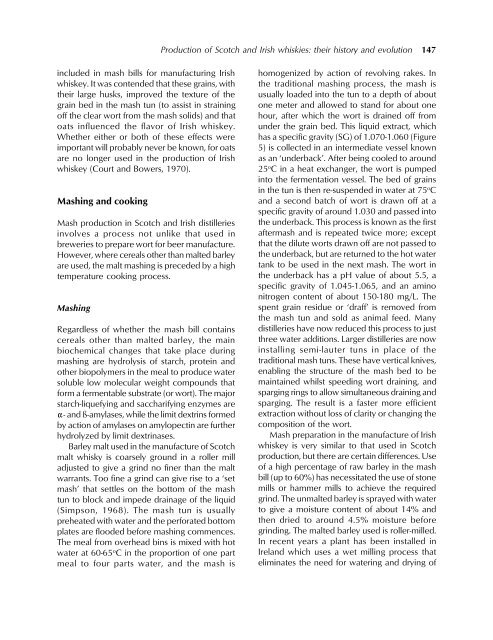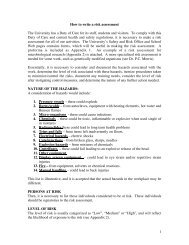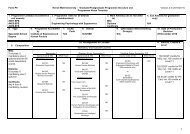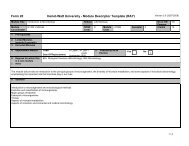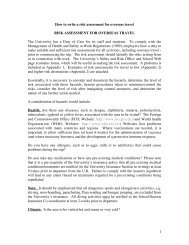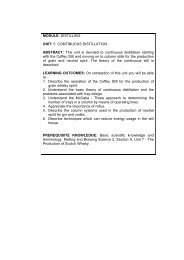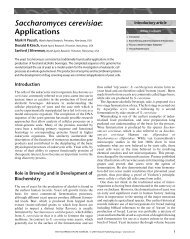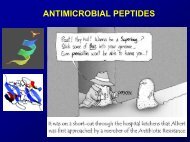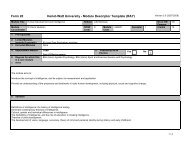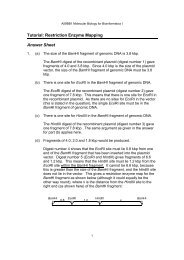Chapter 11 Production of Scotch and Irish whiskies: their history and ...
Chapter 11 Production of Scotch and Irish whiskies: their history and ...
Chapter 11 Production of Scotch and Irish whiskies: their history and ...
You also want an ePaper? Increase the reach of your titles
YUMPU automatically turns print PDFs into web optimized ePapers that Google loves.
<strong>Production</strong> <strong>of</strong> <strong>Scotch</strong> <strong>and</strong> <strong>Irish</strong> <strong>whiskies</strong>: <strong>their</strong> <strong>history</strong> <strong>and</strong> evolution 147included in mash bills for manufacturing <strong>Irish</strong>whiskey. It was contended that these grains, with<strong>their</strong> large husks, improved the texture <strong>of</strong> thegrain bed in the mash tun (to assist in straining<strong>of</strong>f the clear wort from the mash solids) <strong>and</strong> thatoats influenced the flavor <strong>of</strong> <strong>Irish</strong> whiskey.Whether either or both <strong>of</strong> these effects wereimportant will probably never be known, for oatsare no longer used in the production <strong>of</strong> <strong>Irish</strong>whiskey (Court <strong>and</strong> Bowers, 1970).Mashing <strong>and</strong> cookingMash production in <strong>Scotch</strong> <strong>and</strong> <strong>Irish</strong> distilleriesinvolves a process not unlike that used inbreweries to prepare wort for beer manufacture.However, where cereals other than malted barleyare used, the malt mashing is preceded by a hightemperature cooking process.MashingRegardless <strong>of</strong> whether the mash bill containscereals other than malted barley, the mainbiochemical changes that take place duringmashing are hydrolysis <strong>of</strong> starch, protein <strong>and</strong>other biopolymers in the meal to produce watersoluble low molecular weight compounds thatform a fermentable substrate (or wort). The majorstarch-liquefying <strong>and</strong> saccharifying enzymes are"- <strong>and</strong> ß-amylases, while the limit dextrins formedby action <strong>of</strong> amylases on amylopectin are furtherhydrolyzed by limit dextrinases.Barley malt used in the manufacture <strong>of</strong> <strong>Scotch</strong>malt whisky is coarsely ground in a roller milladjusted to give a grind no finer than the maltwarrants. Too fine a grind can give rise to a ‘setmash’ that settles on the bottom <strong>of</strong> the mashtun to block <strong>and</strong> impede drainage <strong>of</strong> the liquid(Simpson, 1968). The mash tun is usuallypreheated with water <strong>and</strong> the perforated bottomplates are flooded before mashing commences.The meal from overhead bins is mixed with hotwater at 60-65 o C in the proportion <strong>of</strong> one partmeal to four parts water, <strong>and</strong> the mash ishomogenized by action <strong>of</strong> revolving rakes. Inthe traditional mashing process, the mash isusually loaded into the tun to a depth <strong>of</strong> aboutone meter <strong>and</strong> allowed to st<strong>and</strong> for about onehour, after which the wort is drained <strong>of</strong>f fromunder the grain bed. This liquid extract, whichhas a specific gravity (SG) <strong>of</strong> 1.070-1.060 (Figure5) is collected in an intermediate vessel knownas an ‘underback’. After being cooled to around25 o C in a heat exchanger, the wort is pumpedinto the fermentation vessel. The bed <strong>of</strong> grainsin the tun is then re-suspended in water at 75 o C<strong>and</strong> a second batch <strong>of</strong> wort is drawn <strong>of</strong>f at aspecific gravity <strong>of</strong> around 1.030 <strong>and</strong> passed intothe underback. This process is known as the firstaftermash <strong>and</strong> is repeated twice more; exceptthat the dilute worts drawn <strong>of</strong>f are not passed tothe underback, but are returned to the hot watertank to be used in the next mash. The wort inthe underback has a pH value <strong>of</strong> about 5.5, aspecific gravity <strong>of</strong> 1.045-1.065, <strong>and</strong> an aminonitrogen content <strong>of</strong> about 150-180 mg/L. Thespent grain residue or ‘draff’ is removed fromthe mash tun <strong>and</strong> sold as animal feed. Manydistilleries have now reduced this process to justthree water additions. Larger distilleries are nowinstalling semi-lauter tuns in place <strong>of</strong> thetraditional mash tuns. These have vertical knives,enabling the structure <strong>of</strong> the mash bed to bemaintained whilst speeding wort draining, <strong>and</strong>sparging rings to allow simultaneous draining <strong>and</strong>sparging. The result is a faster more efficientextraction without loss <strong>of</strong> clarity or changing thecomposition <strong>of</strong> the wort.Mash preparation in the manufacture <strong>of</strong> <strong>Irish</strong>whiskey is very similar to that used in <strong>Scotch</strong>production, but there are certain differences. Use<strong>of</strong> a high percentage <strong>of</strong> raw barley in the mashbill (up to 60%) has necessitated the use <strong>of</strong> stonemills or hammer mills to achieve the requiredgrind. The unmalted barley is sprayed with waterto give a moisture content <strong>of</strong> about 14% <strong>and</strong>then dried to around 4.5% moisture beforegrinding. The malted barley used is roller-milled.In recent years a plant has been installed inIrel<strong>and</strong> which uses a wet milling process thateliminates the need for watering <strong>and</strong> drying <strong>of</strong>


